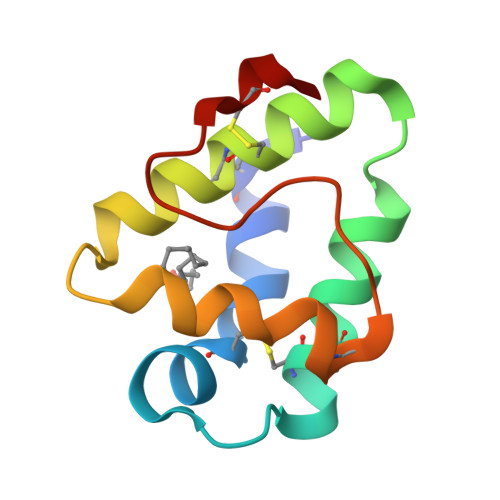Structural insights into the lipid transfer mechanism of a non-specific lipid transfer protein.
Madni, Z.K., Tripathi, S.K., Salunke, D.M.(2020) Plant J 102: 340-352
- PubMed: 31793077
- DOI: https://doi.org/10.1111/tpj.14627
- Primary Citation of Related Structures:
6IWM, 6IWN, 6IWO, 6IWP - PubMed Abstract:
The non-specific lipid transfer proteins (nsLTPs) are multifunctional seed proteins engaged in several different physiological processes. The nsLTPs are stabilized by four disulfide bonds and exhibit a characteristic hydrophobic cavity, which is the primary lipid binding site. While these proteins are known to transfer lipids between membranes, the mechanism of lipid transfer has remained elusive. Four crystal structures of nsLTP from Solanum melongena, one in the apo-state and three myristic acid bound states were determined. Among the three lipid bound states, two lipid molecules were bound on the nsLTP surface at different positions and one was inside the cavity. The lipid-dependent conformational changes leading to opening of the cavity were revealed based on structural and spectroscopic data. The surface-bound lipid represented a transient intermediate state and the lipid ultimately moved inside the cavity through the cavity gate as revealed by molecular dynamics simulations. Two critical residues in the loop regions played possible 'gating' role in the opening and closing of the cavity. Antifungal activity and membrane permeabilization effect of nsLTP against Fusarium oxysporum suggested that it could possibly involve in bleaching out the lipids. Collectively, these studies support a model of lipid transfer mechanism by nsLTP via intermediate states.
Organizational Affiliation:
Regional Centre for Biotechnology, NCR Biotech Science Cluster, 3rd Milestone, Faridabad, 121001, India.



















